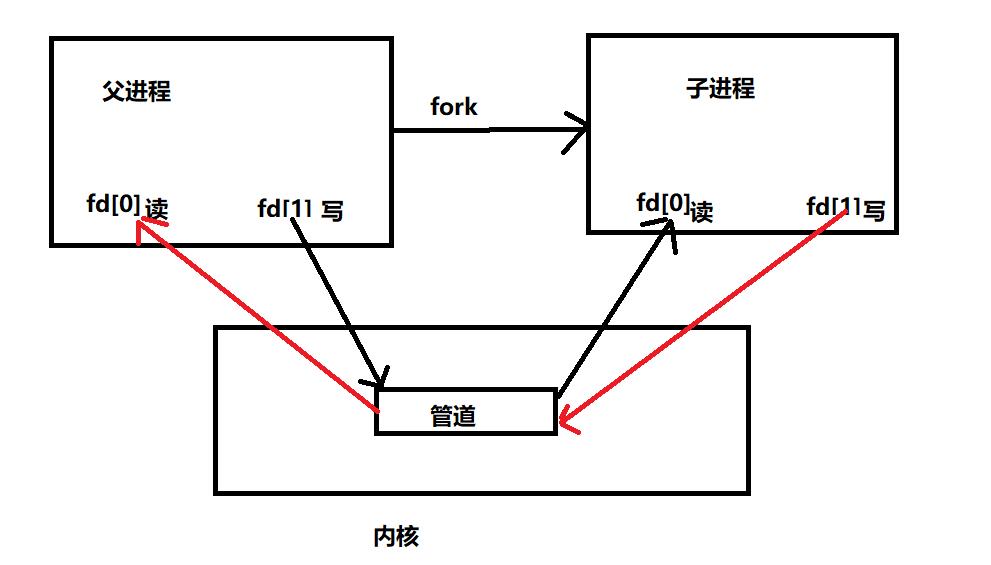查漏补缺:进程间通信(IPC):管道
Posted 落雷
tags:
篇首语:本文由小常识网(cha138.com)小编为大家整理,主要介绍了查漏补缺:进程间通信(IPC):管道相关的知识,希望对你有一定的参考价值。
管道是UNIX系统IPC的最古老形式,所有UNIX系统都提供此种通信机制。管道有以下两种局限性:
(1)历史上,管道是半双工的(即数据只能在一个方向上流动)。
(2)管道只能在具有公共先祖的两个进程之间使用。通常,一个管道有一个进程创建,在进程调用fork之后,这个管道就能在父子进程间使用。
管道的创建:
管道通过调用pipe函数创建。
头文件:#include <unistd.h>
原型:int pipe(int fd[2])
返回值:成功,返回0;失败,返回-1.
经由参数fd返回两个文件描述符:fd[0]为 读而打开,fd[1]为写而打开。fd[1]的输出是fd[0]的输入。
图解如下:

测试程序:

1 #include <stdio.h> 2 #include <unistd.h> 3 #include <stdlib.h> 4 5 int main(int argc,char* argv[]) 6 { 7 int n; 8 int fd[2]; 9 pid_t pid; 10 char buf[128] = {0}; 11 12 if(pipe(fd) < 0) 13 { 14 printf("pipe error\\n"); 15 return -1; 16 } 17 18 if((pid = fork()) < 0) 19 { 20 printf("fork error\\n"); 21 return -1; 22 } 23 else if(pid > 0) 24 { 25 close(fd[0]); 26 printf("父进程ID:%d,子进程ID:%d\\n",getpid(),pid); 27 write(fd[1],"hello world\\n",sizeof("hello world\\n")); 28 } 29 else 30 { 31 close(fd[1]); 32 n = read(fd[0],buf,sizeof(buf)); 33 printf("子进程ID:%d\\n",getpid()); 34 write(STDOUT_FILENO,"子进程:",sizeof("子进程:")); 35 write(STDOUT_FILENO,buf,n); 36 } 37 38 return 0; 39 40 }
以上是关于查漏补缺:进程间通信(IPC):管道的主要内容,如果未能解决你的问题,请参考以下文章
